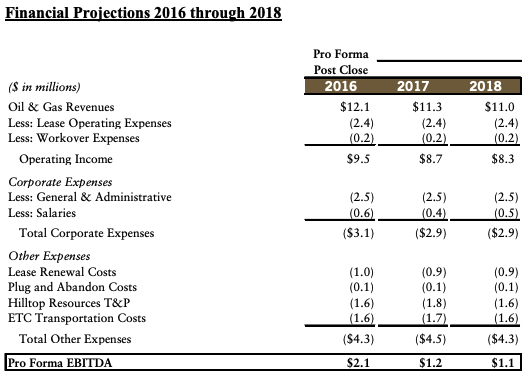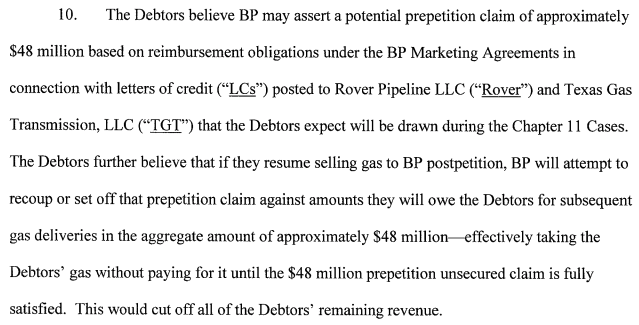New Chapter 11 Bankruptcy Filing -- Fusion Connect Inc.
June 3, 2019
We previously wrote about Fusion Connect Inc. ($FSNN), providers of “Unified Communications-as-a-Service” and “Infrastructure-as-a-Service” in “⛈A Dark "Cloud" on the Horizon⛈.” Therein we marveled at how special Fusion must be…to fail SO SPECTACULARLY in today’s cloud here, cloud there, cloud everywhere, everyone’s gaga for cloud environment. Cloud is SO captivating that it wasn’t until the company filed a piss poor 8-K back in April that a B. Riley FBR ($RILY) analyst FINALLY had an epiphany and declared that the company’s stock ought to be downgraded from “buy” to “neutral” (huh?!?) with a price target of $0.75 — down from $9.75/share. This is despite the fact that the stock hadn’t traded anywhere in the vicinity of $9.75/share in ages — nowhere even close, actually — but whatevs. Clearly, his head was in the cloud(s). This, ladies and gentlemen, demonstrates, in a nutshell, the utter worthlessness of equity analyst reports.🖕
But this isn’t a story about shoddy analyst research. That would be wholly unoriginal. This is a story about synergies and burdensome debt. Because, like, that’s so super original that you won’t read of it again until…well…you scroll below to the next bit of content about FTD!! 🙄
Boiled down to its simplest form, this company is the product of an acquisition strategy (and reverse merger) gone wrong. Like, in a major, major way. Per the company:
The Company pursued the Birch Merger with a vision of leveraging its existing processes and structures to create synergies between Fusion’s and Birch’s joined customer bases, combine network infrastructure assets to improve operational efficiencies, and ultimately drive material growth in Fusion’s and Birch’s combined annual revenue. In connection with the Birch Merger and MegaPath Merger, the Company incurred $680 million in secured debt. (emphasis added)
That reverse merger closed at the end of Q2, 2018. Yet…
Unfortunately, due to underperformance compared to business projections, the Company found itself with limited liquidity and at risk of default under its debt documents by early 2019.
Wait, what? Limited liquidity and risk of default by “early 2019”?!? Who the f*ck diligenced and underwrote this transaction?!? This sitch is so bad, that the company literally didn’t have enough liquidity to make a recent $6.7mm amort payment under the first lien credit agreement and a $300k interest payment on its unsecured debt. This is the company’s pre-petition capital structure:
$20mm super senior L+10% June 2019 debt
$43.3mm Tranche A Term Loans L+6.0% May 2022 debt
$490.9mm Tranche B Term Loans L+8.5% May 2023 debt
$39mm Revolving Loans L+6.0% May 2022 debt
$85mm Second Lien L+10.5% November 2023 debt
$13.3mm Unsecured Debt
Back in April we summed up the situation as follows:
The company’s recent SEC reports constitute a perfect storm of bad news. On April 2, the company filed a Form 8-K indicating that (i) a recently-acquired company had material accounting deficiencies that will affect its financials and, therefore, certain of the company’s prior filings “can no longer be relied upon,” (ii) it won’t be able to file its 10-K, (iii) it failed to make a $7mm interest payment on its Tranche A and Tranche B term loan borrowings due on April 1, 2019, and (iv) due to the accounting errors, the company has tripped various covenants under the first lien credit agreement — including its fixed charge coverage ratio and its total net leverage ratio.
Again, who diligenced the reverse merger?!? 😡
So here we are. In bankruptcy. To what end?
The company is seeking a dual-path restructuring that is all the rage these days: everyone loves to promote optionality that will potentially result in greater value to the estate. In the first instance, the company proposes, as a form of “stalking horse,” a “reorganization transaction” backed by a restructuring support agreement with certain of its lenders. This transaction would slash $300mm of the company’s $665mm of debt and result in the company’s first lien lenders owning the company. That is, unless a buyer emerges out of the woodwork with a compelling purchase price. To promote this possibility, the company is filing a bid procedures motion with the bankruptcy court with the hope of an eventual auction taking place. If a buyer surfaces with mucho dinero, the company will toggle over to a sale pursuant to a plan of reorganization. This would obviously be the optimal scenario. Absent that (and maybe even with that), we’ve got a jaw-dropping example of value destruction. “Fail fast,” many in tech say. These cloud bros listened!! Nothing like deep-sixing yourself with a misguided poorly-diligenced acquisition. Bravo!!
The company has secured a commitment for a fully-backstopped $59.5mm DIP that subsumes the $20mm in super senior pre-petition bridge financing recently provided by the first lien lenders. Is this DIP commitment good for general unsecured creditors? Is any of this generally good for unsecured creditors? Probably not.
Major creditors include a who’s who of telecommunications companies, including AT&T Inc. ($T) (first Donald Trump and now THIS…rough week for AT&T), Verizon Communications Inc. ($VZ), XO Communications (owned by VZ), Frontier Communications Corp. ($FTR)(which has its own issues to contend with as it sells assets to sure up its own balance sheet), CenturyLink Inc. ($CTL), Level 3 Communications ($LVLT), Time Warner Inc. ($TWX), and….wait for it…bankrupt Windstream Communications ($WINMQ). Because the hits just keep on coming for Windstream….
Jurisdiction: S.D. of New York (Judge Bernstein)
Capital Structure: see above.
Professionals:
Legal: Weil Gotshal & Manges LLP (Gary Holtzer, Sunny Singh, Natasha Hwangpo)
Board of Directors: Matthew Rosen, Holcombe Green Jr., Marvin Rosen, Holcombe Green III, Michael Del Guidice, Lewis Dickey Jr., Rafe de la Gueronniere, Neil Goldman)
Financial Advisor: FTI Consulting Inc. (Mark Katzenstein)
Investment Banker: PJT Partners (Brent Herlihy, John Singh)
Claims Agent: Prime Clerk LLC (*click on the link above for free docket access)
Other Parties in Interest:
Ad Hoc First Lien Lender Group
Legal: Davis Polk & Wardwell LLP (Damian Schaible, Adam Shpeen)
Financial Advisor: Greenhill & Co. Inc.
DIP Lender: Credit Suisse Loan Funding LLC
DIP Agent, Prepetition Super Senior Agent & Prepetition First Lien Agent: Wilmington Trust NA
Legal: Arnold & Porter Kaye Scholer (Michael Messersmith, Sarah Grylll, Alan Glantz)
Prepetition Second Lien Successor Agent: GLAS America LLC & GLAS USA LLC
Ad Hoc Group of Tranche A Term Loan/Revolving Lenders
Legal: Simpson Thacher & Bartlett LLP (Sandeep Qusba, Soogy Lee, Edward Linden)
Second Lien Lenders
Legal: Proskauer Rose LLP (Charles Dale, Jon English)
Large Unsecured Creditor: AT&T
Legal: Norton Rose Fulbright US LLP (David Rosenzweig, Francisco Vazquez)
Updated 6/4/19 at 5:42am













